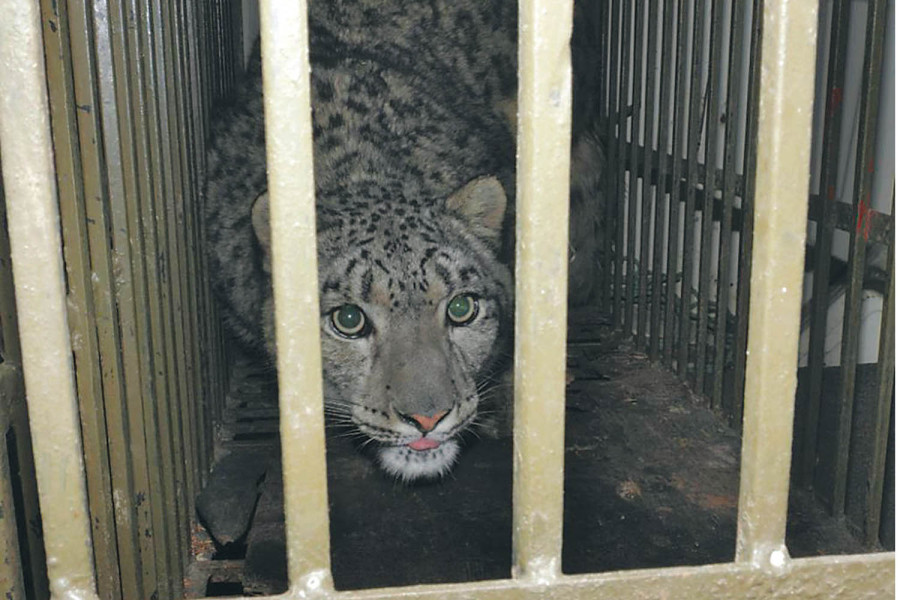National
Snow leopard study incorporated in local curriculum in Mustang
Conservationists hope that retaliatory killings of snow leopards, one of the major challenges to conservation efforts, would decline in the coming days.
Post Report
In a bid to raise awareness about snow leopards, the Gharapjhong Rural Municipality in the mountainous district of Mustang has incorporated the study about the endangered species into the local curriculum.
Officials hope that including study of snow leopards in the local curriculum will help lessen growing human-wildlife conflict and help with the ongoing conservation efforts.
“Snow leopard, one of the rare and endangered species, often comes to our local unit for prey,” said Mohan Singh Lalchan, chairman of the rural municipality. “To lessen growing human-wildlife conflict and protect the snow leopard, we have incorporated the study of the importance of snow leopard in the local curriculum.”
Nepal is among the 12 countries that are home to snow leopards. Nepal has committed to protecting the species, its prey, and its habitats. However, rising temperatures caused by global warming, shrinking habitats, and growing human-wildlife conflict have made endeavours to conserve the endangered species a big challenge.
“We have already incorporated the topic of snow leopard in the curriculum of grades two and three and will include it in the curriculum of up to eighth grade,” said Lalchan. “We believe that it is also the duty of the concerned local unit to shoulder responsibility for snow leopard conservation.”
Gharapjhong Rural Municipality is part of the Annapurna Conservation Area Project, the first and largest protected area in Nepal. The snow leopard is among the six threatened species, along with tiger, one-horned rhinoceros, elephant, pangolin, and red panda.
Snow leopards are commonly observed around the district’s communities, and many have been captured on camera traps. Experts say the human-wildlife conflict is Nepal's biggest challenge in conserving the snow leopard.
Local school teachers said that including the topic of snow leopard in the local curriculum helps make children and their family members aware of the importance of the endangered species.
“When children understand the importance of the rare species, they will tell their family members about the message they got from books and teachers,” said Bhesraj Bastola, conservation teacher at Janahit Secondary School, Jomsom. “We hope that retaliatory killings of snow leopards, one of the major challenges to conservation efforts, will decline in future.”
Conservationists say that the inclusion of snow leopards and their importance in the local curriculum are great achievements made through years of tireless efforts in the conservation sector.
“This is one of the great achievements we jointly made through our years of awareness efforts,” said Anil Adhikari, executive director of the Teka Samuha Nepal, a non-profit that runs a community-based snow leopard conservation project in six local units in Mustang. “School children, who are the future guardians of local biodiversity, need to understand the snow leopard and could disseminate this knowledge to their communities. We hope that other local units will follow Gha's exemplary endeavours of Mustang’s Gharapjhong Rural Municipality.”
Experts say that, with the inclusion of the topic of snow leopards in the curriculum, students will now understand the concept of biodiversity along with the importance of endangered species. They will also know that every species is important in the ecosystem—and that changes in the climate could threaten their existence.




 9.12°C Kathmandu
9.12°C Kathmandu














